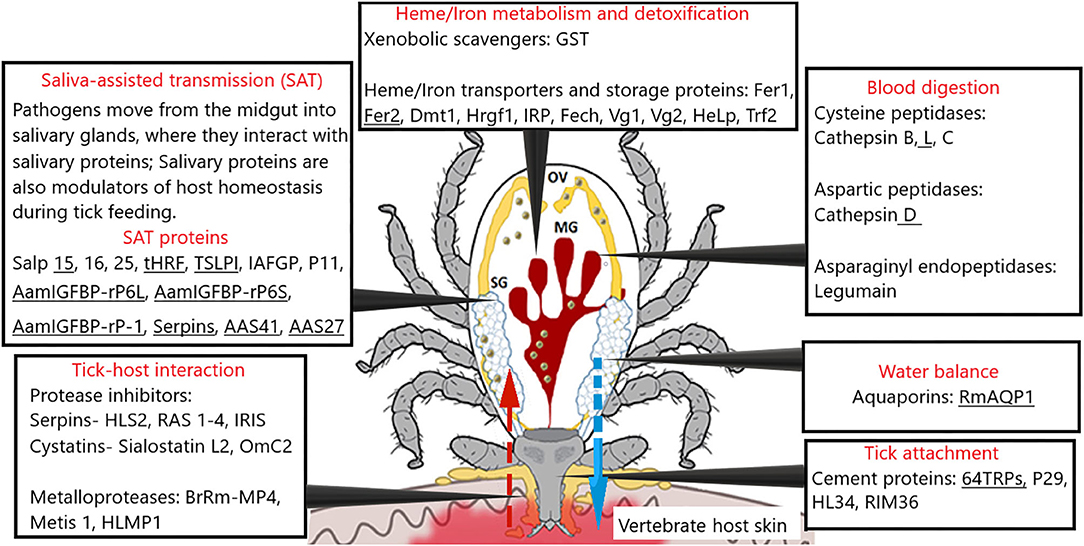
95% of researchers rate our articles as excellent or good
Learn more about the work of our research integrity team to safeguard the quality of each article we publish.
Find out more
CORRECTION article
Front. Vet. Sci. , 31 August 2020
Sec. Veterinary Infectious Diseases
Volume 7 - 2020 | https://doi.org/10.3389/fvets.2020.00575
This article is part of the Research Topic An Overview of Current Knowledge on Ticks and Tick-borne Diseases View all 8 articles
This article is a correction to:
Understanding Tick Biology and Its Implications in Anti-tick and Transmission Blocking Vaccines Against Tick-Borne Pathogens
 Biswajit Bhowmick1,2
Biswajit Bhowmick1,2 Qian Han1,2*
Qian Han1,2*A Corrigendum on
Understanding Tick Biology and Its Implications in Anti-tick and Transmission Blocking Vaccines Against Tick-Borne Pathogens
by Bhowmick, B., and Han, Q. (2020). Front. Vet. Sci. 7:319. doi: 10.3389/fvets.2020.00319
In the original article, there was a mistake in the legend for Figure 1. The Figure was adapted from two sources, which the authors neglected to mention. The correct legend appears below.

Figure 1. A schematic representation of tick physiological processes and involved molecules tested as vaccine candidates [modified from (78, 103)].
The authors apologize for this error and state that this does not change the scientific conclusions of the article in any way. The original article has been updated.
78. de la Fuente J, Kopáček P, Lew-Tabor A, Maritz-Olivier C. Strategies for new and improved vaccines against ticks and tick-borne diseases. Parasite Immunol. (2016) 38:754–69. doi: 10.1111/pim.12339
Keywords: anti-tick vaccines, Ixodes, Borrelia, transmission-blocking, blood, saliva
Citation: Bhowmick B and Han Q (2020) Corrigendum: Understanding Tick Biology and Its Implications in Anti-tick and Transmission Blocking Vaccines Against Tick-Borne Pathogens. Front. Vet. Sci. 7:575. doi: 10.3389/fvets.2020.00575
Received: 18 June 2020; Accepted: 20 July 2020;
Published: 31 August 2020.
Edited and reviewed by: Lan He, Huazhong Agricultural University, China
Copyright © 2020 Bhowmick and Han. This is an open-access article distributed under the terms of the Creative Commons Attribution License (CC BY). The use, distribution or reproduction in other forums is permitted, provided the original author(s) and the copyright owner(s) are credited and that the original publication in this journal is cited, in accordance with accepted academic practice. No use, distribution or reproduction is permitted which does not comply with these terms.
*Correspondence: Qian Han, cWlhbmhhbkBoYWluYW51LmVkdS5jbg==
Disclaimer: All claims expressed in this article are solely those of the authors and do not necessarily represent those of their affiliated organizations, or those of the publisher, the editors and the reviewers. Any product that may be evaluated in this article or claim that may be made by its manufacturer is not guaranteed or endorsed by the publisher.
Research integrity at Frontiers

Learn more about the work of our research integrity team to safeguard the quality of each article we publish.